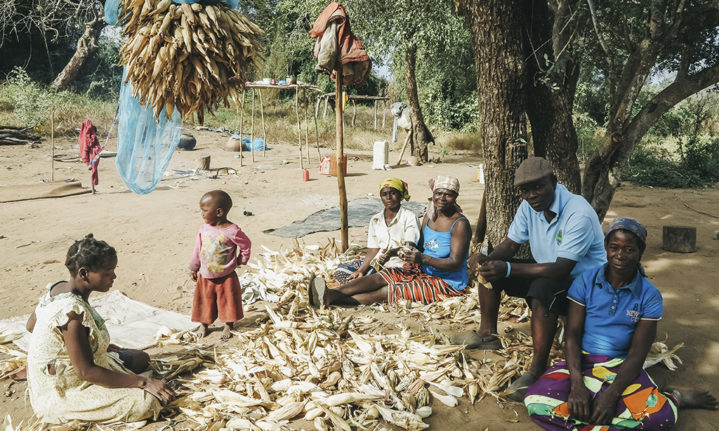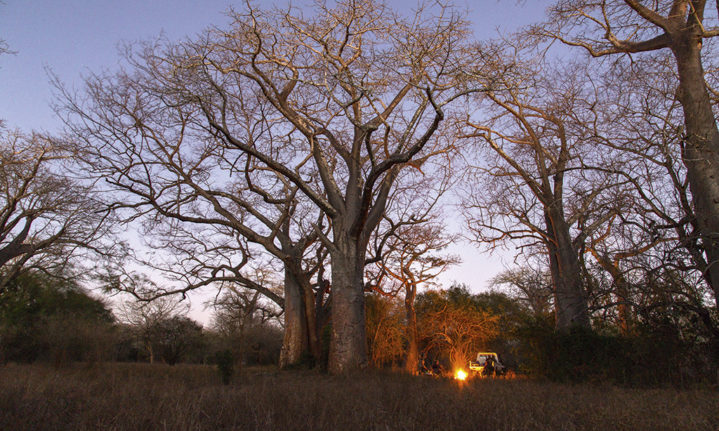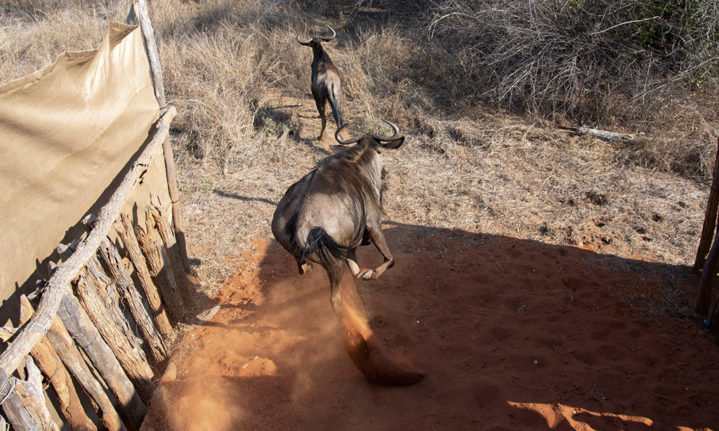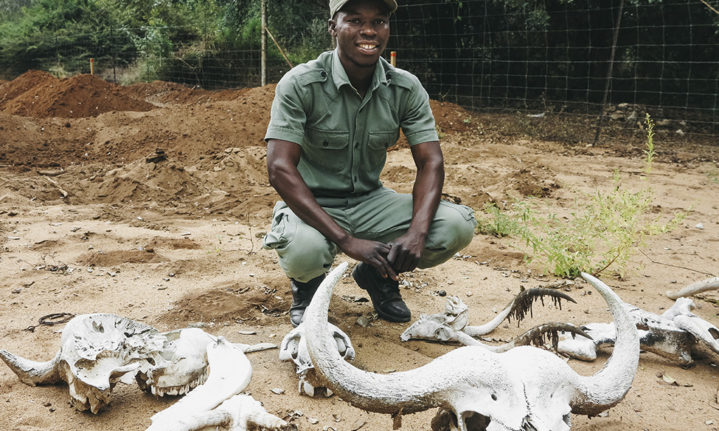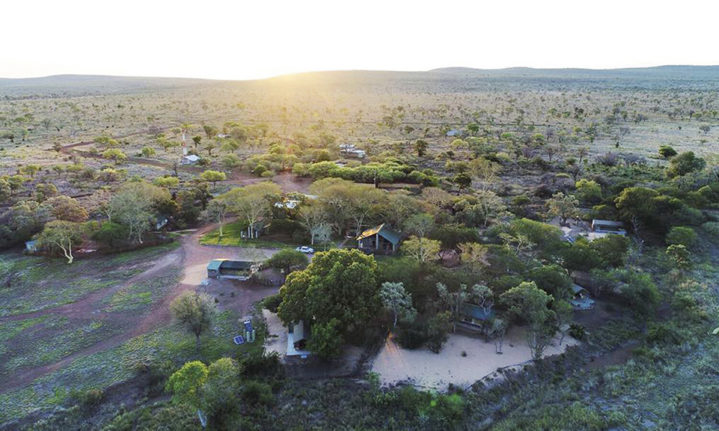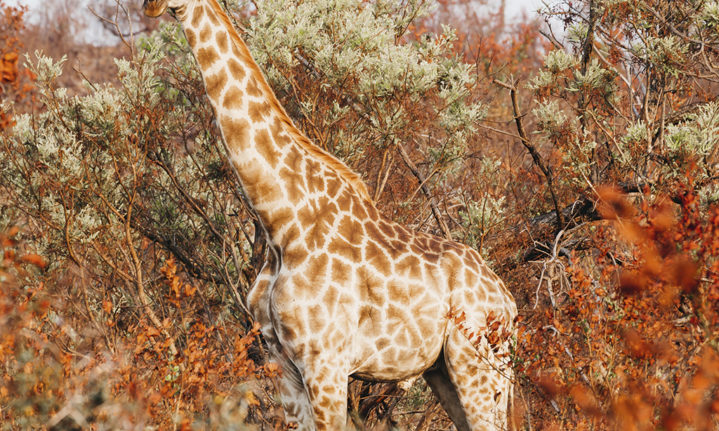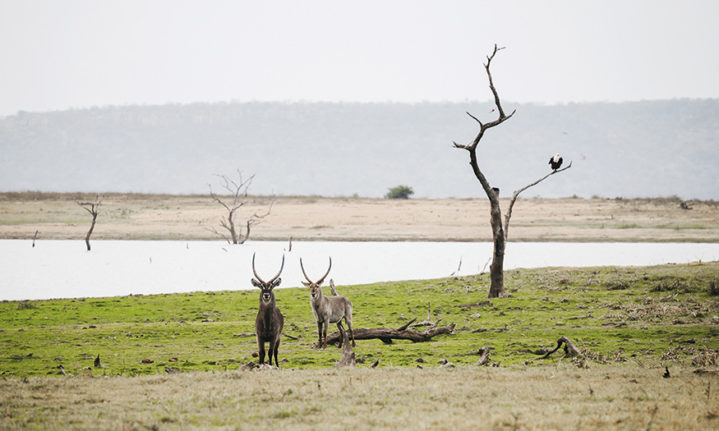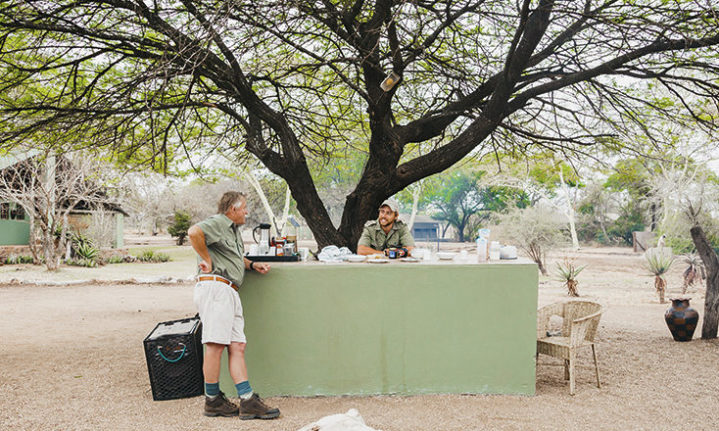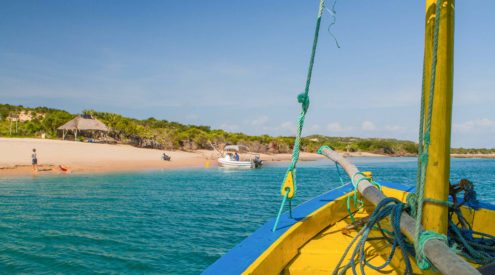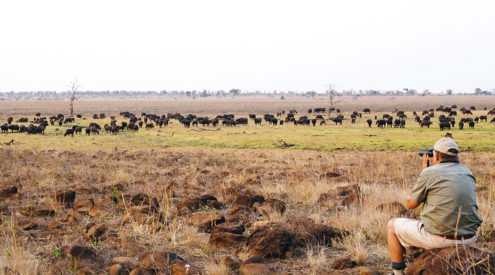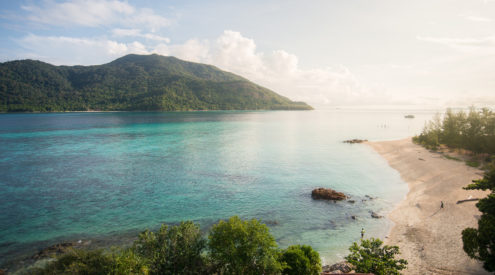Our neighbour is on the road to restoring its wildlife heritage. We went on a recce to Zinave National Park, Inhambane Province, which is setting the pace for wildlife conservation. It has an abundance of game and is still off the regular tourist route, so you’ll get a true wilderness experience with no cars in sight.
Click here to read part one
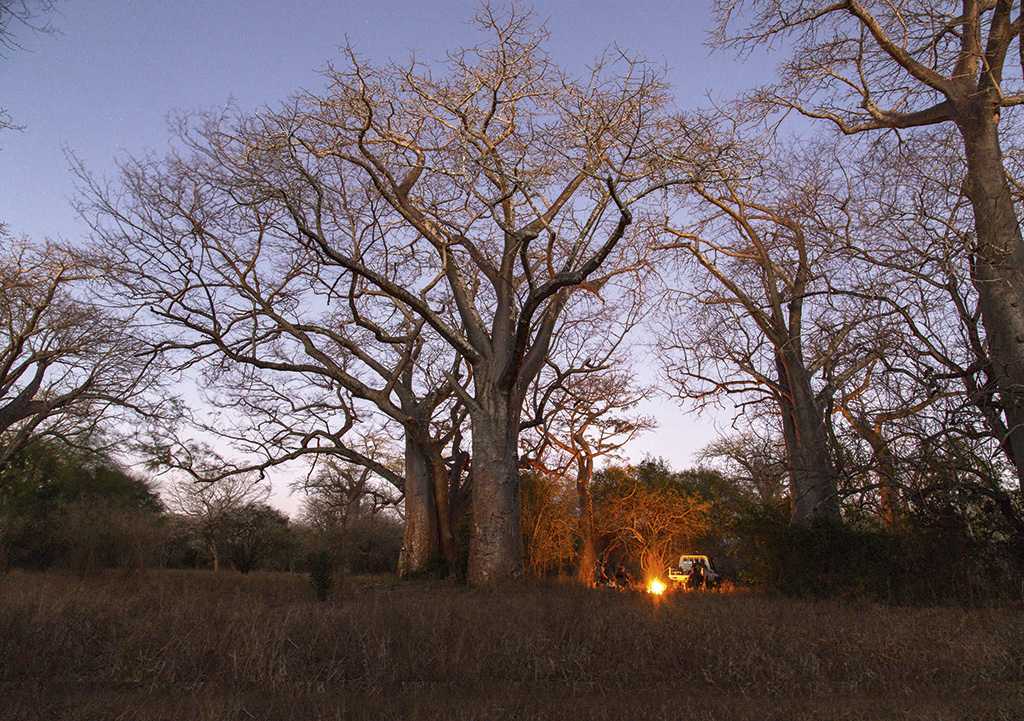
Camping in Zinave National Park is for people with an adventurous streak. Photograph: Nico Grundling
There was a faint whiff of aviation fuel in the cockpit, but pilot Hannes van Wyk seemed unperturbed as he methodically penned his paperwork. We were 30 minutes into the flight, heading due west from Vilanculos on the coast into the interior in a Peace Parks Foundation (PPF) plane, which is used primarily for aerial surveys in Zinave. Tall and slim, Hannes had virtually slithered into the pilot’s seat of this tiny plane. I sat next to him and the rest of the space was taken up with my tog bag and a few oddments in the stowage area – there’d be no snacks and drinks on this flight. I was on my way to Zinave to join PPF staff doing wildlife translocations. The park is being restocked after years of neglect.
ALSO READ: Desert countries to visit: 5 things to do in Morocco
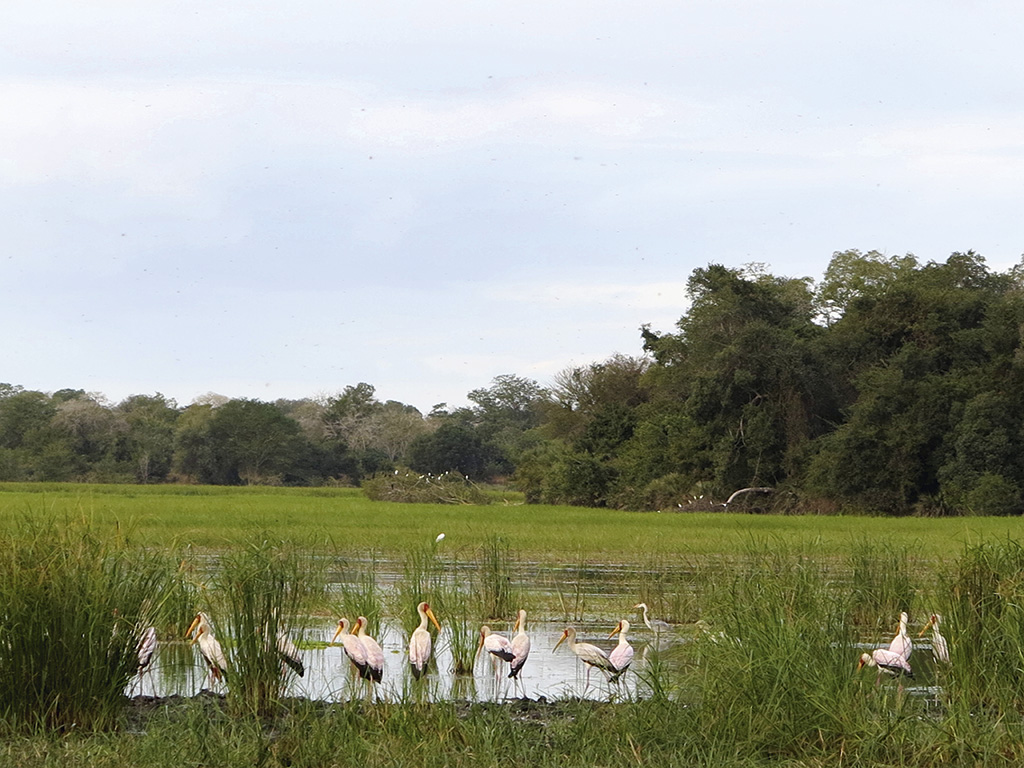
Lake Zinave and various other bodies of water in the park, ensure that waterbirds, like these yellow-billed storks, are plentiful all year round.
Most of the flight, so far, had been over sweeping wilderness. The countryside rolled out in all directions and there was no apparent sign of human settlement anywhere. When we landed on the gravel runway in Zinave, alongside the shimmering Save River, I was mesmerised by the raw beauty of the place. From the air, it’s impossible to appreciate the ironwood, fever tree and massive mopane forests, twinkling lakes festooned with water lilies, nor see the long-legged waterbirds picking their way through the shallows. Glistening green after massive summer rains, this bucolic setting is now being populated with wildlife once again.
Big changes have been happening in Zinave. Waterbuck, reedbuck, nyala, giraffe, impala, kudu, oribi, hippo, warthog, buffalo and elephant already inhabit the park and more are arriving every month as part of one of the biggest rewilding programmes ever undertaken in Africa. When complete, about 7 500 animals encompassing 10 different species will have been translocated to Zinave. Moving wildlife here from neighbouring countries started in October 2016. In all, 120 game-capture staff, veterinarians, ecologists, helicopter pilots and truck drivers were involved in this large-scale endeavour.
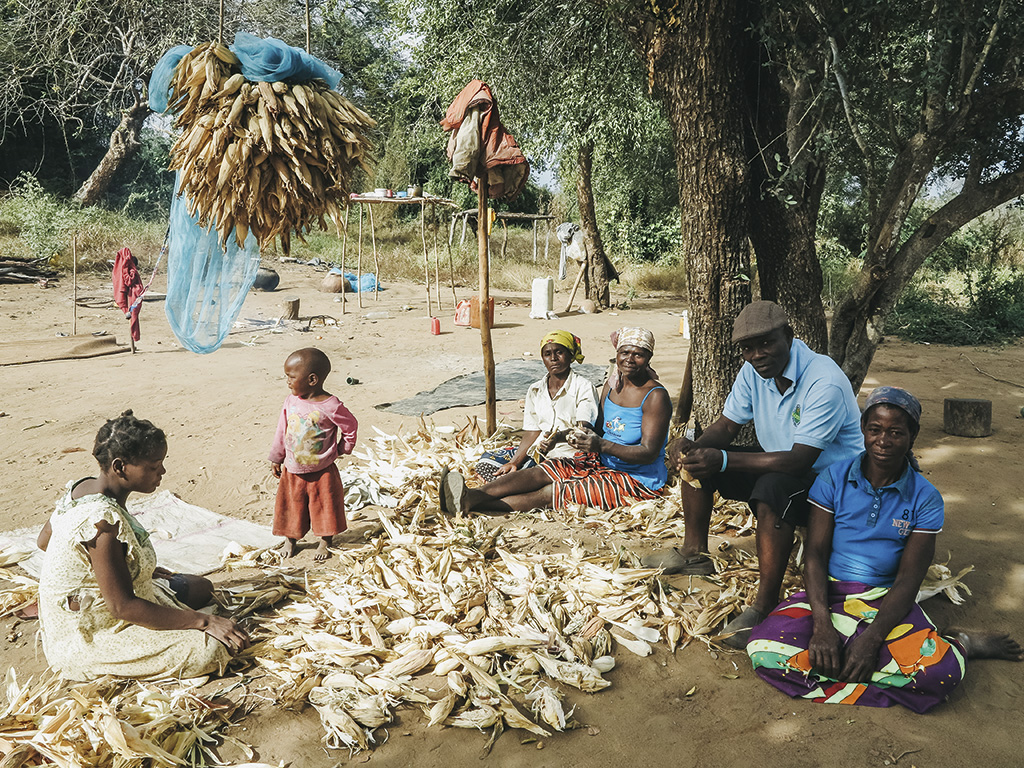
Wildlife translocations into Zinave are ongoing as numerous species, including these blue wildebeest, are reintroduced to the park in a massive restocking programme.
Although Zinave acquired national-park status in 1972, Mozambique’s long civil war which ended in 1992, decimated wildlife in the reserve. PPF signed a co-management agreement with the Mozambique government in 2015 in order to jointly develop Zinave as an integral part of the Great Limpopo Transfrontier Conservation Area. This huge tract of land will stitch together animal migration routes and tourism links between South Africa, Zimbabwe and Mozambique. And the intention is to identify and develop wildlife corridors to connect Zinave with Banhine and Limpopo national parks in Mozambique. PPF senior project manager for Mozambique, Antony Alexander, was in Zinave when we landed.
A truck carrying wildlife from Kruger National Park was expected to arrive the next day and he was smoothing out red-tape issues with scant comms. ‘In the short term, we want to restore the ecosystem by fast-tracking the restocking of wildlife, because Zinave has massive carrying capacity,’ he explained while sending emails from the deck of Tondo Lodge. ‘But for this to succeed, the area needs to be secure, so additional anti-poaching staff are being employed and trained.’
While increasing park infrastructure and getting wildlife numbers up, community upliftment programmes are being implemented for people living adjacent to the park. With the attractions of easier access to water, agricultural assistance programmes, education and health facilities, it’s hoped that those communities still living in the park will voluntarily move to these developing areas. The following afternoon, just after lunch, the truck from Kruger rumbled down the sand track with its cargo of precious wildlife. For the next three years, up to 100 trucks carrying diverse species of wildlife are to arrive in Zinave annually. Elephant, giraffe, eland, zebra, buffalo, blue wildebeest, kudu and various other species have been generously donated by neighbouring countries to restore Zinave’s stock. Certainly, the biggest and bulkiest wildlife donation has been from the De Beers Group’s Venetia Limpopo Nature Reserve, and Ithala and Mkuze reserves, with 100 elephants having already undertaken the 1 500km road trip.
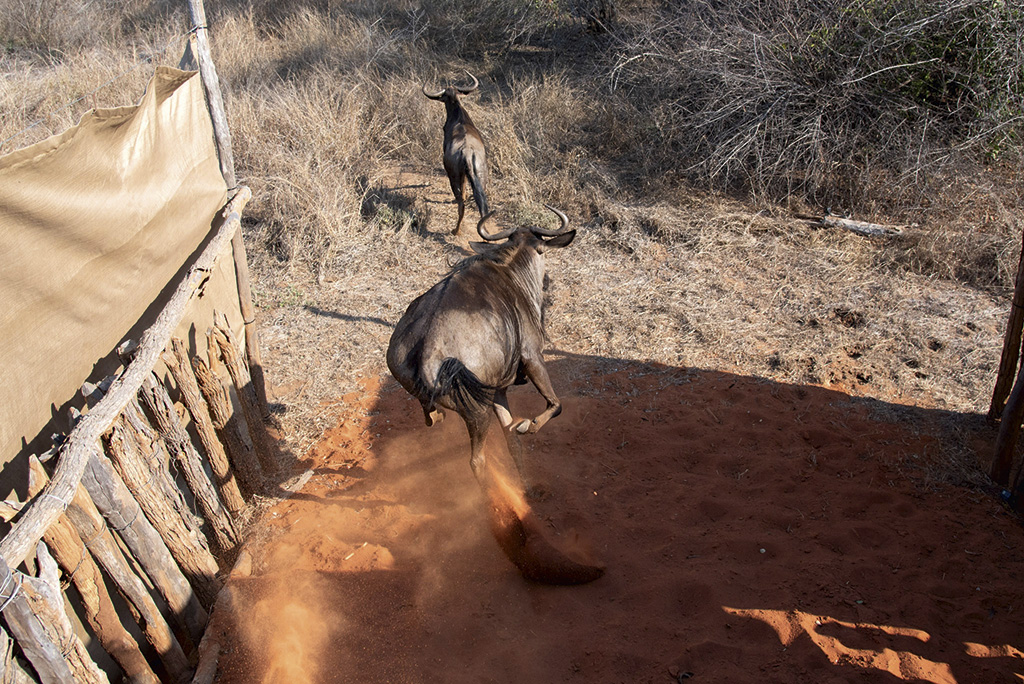
Many communities live around Zinave and Peace Parks is helping to empower them to have brighter futures.
It may have been mid-winter, but it was hot in Zinave and the sky indigo. PPF project manager for Zinave, Bernard van Lente, was behind the wheel of his Land Cruiser as we headed deeper into the park, tree spotting as we went. The landscape was idyllic and lush. ‘The loggers lost their nerve and abandoned these,’ he said, pointing to long mopane poles strewn over the grass. ‘We’ve had great success in a very short time and have basically put a stop to logging. Subsistence poaching is also under control. There was a grace period for poachers to hand in their homemade weapons, but now we’ve clamped down with 52 rangers on the job.’
Zinave National Park is simply breathtaking. We marvelled at a baobab tree with a 27m waistline – just one of 200 tree species in the park. ‘Luckily no permanent damage has been done to Zinave,’ continued Bernard, as we drove under a tree canopy, ‘so there’s a good chance of it being completely rehabilitated. The diversity is incredible and it’s an iconic park for game viewing with typical African savannah, variable habitat comparable to Kruger but with higher rainfall, so there will be more species to see here. Predators may not need to be introduced, because they will make their way here on their own. There are already reports of lions and hyenas in the area.’
It was amazing that the animals were not at all skittish. Most were in the 18 600-hectare sanctuary section, but there were plenty, too, in the surrounding 200km of sand roads that have been opened up to 4×4 self-drive visitors. Some roads, however, are inaccessible in the rainy season from November to April. ‘Zinave will always be a 4×4 destination, where the journey is part of the experience,’ said Bernard, as he stopped at Zinave Pan flourishing with water lilies. ‘It’s vast. You feel part of nature. If you love trees, birds, butterflies, wildlife and photography, Zinave is it. You don’t find 400 000 hectares of pure wilderness easily in the world.’ Although the challenges are considerable – and the nearest big town is 250km away – infrastructure is being created in Zinave. ‘We have had to build something out of nothing,’ explained Bernard. ‘The longer I’m here, the more I love it, and I can see the big picture. There are huge areas of Zinave that we haven’t even been able to access yet as there are no roads, but we have seen them from the air and they are enticing.
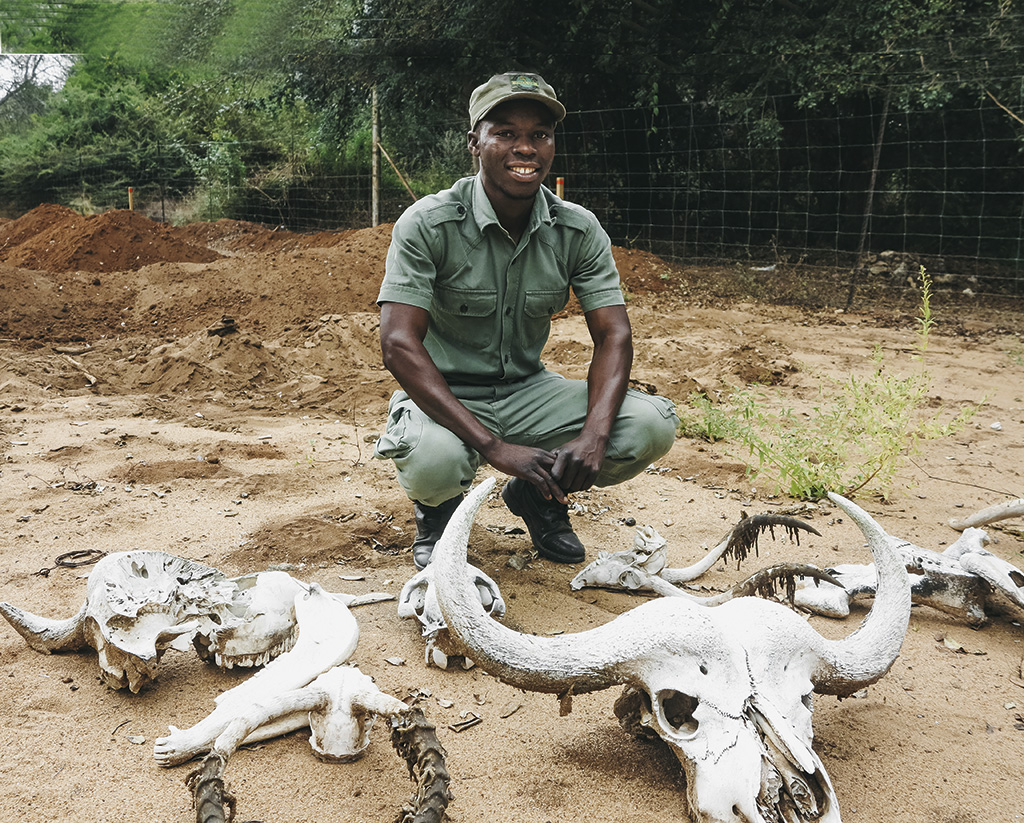
Estevão Chiure is one of Zinave’s passionate rangers. He says the restoration of Zinave National Park is a dream come true.
’Over the next 10 years, Bernard’s aim is to see a fully restored ecosystem with the planned wildlife corridors in place to Banhine and Limpopo national parks. Zinave won’t be fenced: rather, it will be a vast, open wilderness area with people coexisting peacefully with nature. ‘As humans, we need wilderness areas for our psychological, emotional and physical well-being,’ he says. Back at Tondo Camp, sitting around the fire with T-bone steaks sizzling on the braai and watching the sun slip into the Save River, I felt a rare sense of being in true wilderness. It was here that Hannes also let slip that he left his luggage in Vilanculos so as not to overload the tiny plane. He leaned back in his camp chair and admitted that clean clothes and underwear were now a novelty, until his next trip back to ‘town’. And those fuel fumes were not innocuous after all … the plane had been grounded until parts arrived from South Africa. So our trip back to Vilanculos the next day would be five hours along rough sand tracks. But first, we would eat delicious steak and chew the fat around the fire, until just the embers remained.
Words by Keri Harvey and Michelle Hardie; Photographs: Michelle Hardie
Follow us on social media for more travel news, inspiration, and guides. You can also tag us to be featured.
TikTok | Instagram | Facebook | Twitter
ALSO READ: Rewilding Mozambique: Sábiè Game Park











